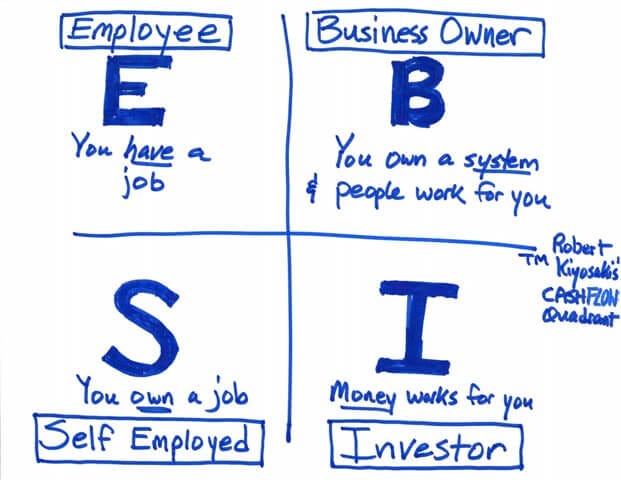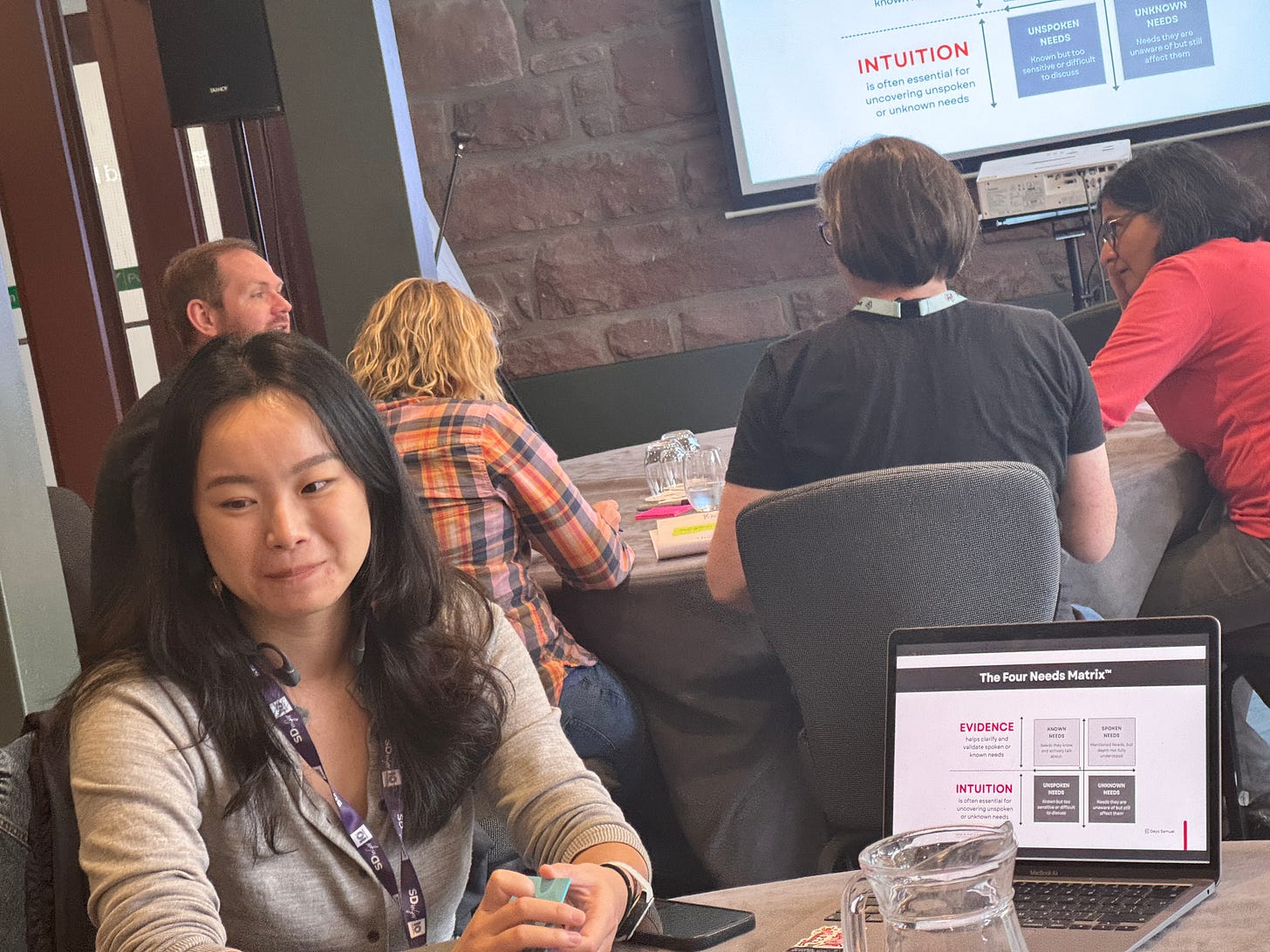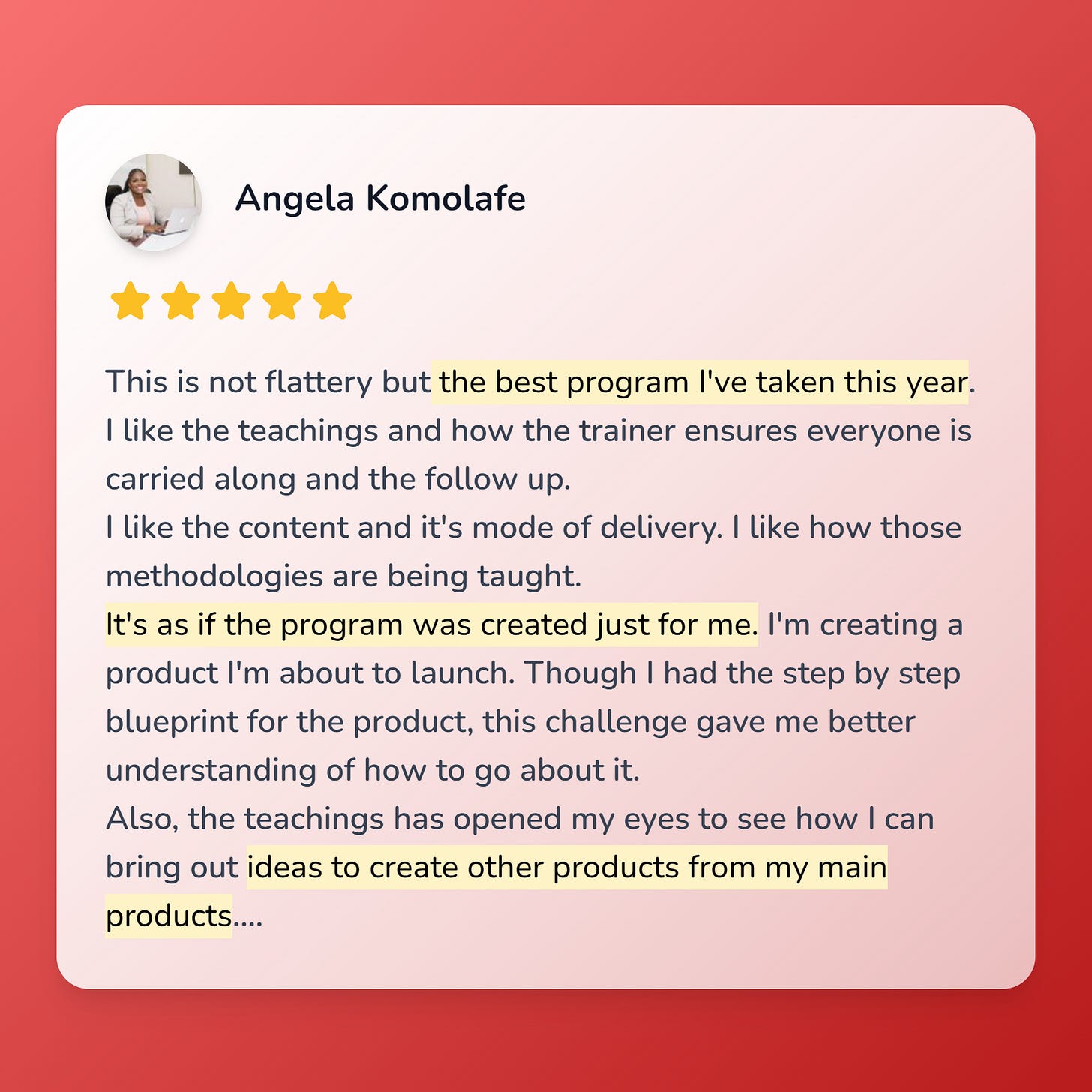How Models Make Your Product 10x More Valuable
Your product is invisible to your customers if you don’t show them its value
Hey there!
As a reader of The Dayo Samuel Report, I know you’re ready to take your first step towards turning your knowledge into real income, but you might feel overwhelmed by where to start.
You might be thinking, ‘How can I even begin?’—and you’re not alone in feeling this way.
You want to:
Create products that people want to buy.
Present your ideas in a way that makes them easy to understand.
Position yourself as an expert in your field, not just with words but with something tangible.
But here’s the truth: If you’ve ever struggled to explain your idea to someone or felt frustrated when they didn’t ‘get it,’ you’re not alone.
That’s why I want to introduce you to something that will make your intangible ideas 10x more valuable and easier to sell: Models.
What is a Model?
Since you asked…
At its core, a model is a visual representation of your ideas.
Think of a model like a roadmap for your customers.
Imagine you’re trying to explain a new concept—without a clear model, they can get lost.
But when you give them a visual guide, suddenly it all makes sense, and they understand your value right away.
Here’s an easy way to think about it: A model is both a thinking tool that helps you clarify your ideas and a communication tool that helps others understand them.
One of the simplest examples of a model you might already know is Robert Kiyosaki’s Cashflow Quadrant.
That famous ESBI Quadrant.
The one that breaks down four types of people: Employee, Self-Employed, Business Owner, and Investor.
It’s more than just an idea, right?
That simple visual model became the foundation of his teachings, his books, and even entire businesses.
Why? Because it helps people visualize where they are now and where they want to go.
When people can SEE the journey, they are more likely to take it.
The Power of Models: Making Your Ideas Visible
One of the most powerful things you can do for your business, product, or service is to turn your intangible ideas into a visual model.
Imagine the confidence you’ll feel when your ideas are no longer floating around in your head but clearly laid out for everyone to see—and understand. That’s the power of models.
Let me share an example from a recent session at SDinGov (Service Design in Government), where I spoke last week.
I presented a model I created in 2017 called the Four Needs Matrix (see the laptop image above).
For those who think it’s familiar, it’s the same model I wrote about 20 days ago when I asked if you were solving the right problems for your market.
It was a full-circle moment for me.
Seeing it on the screen again, and watching how it helped others grasp the balance between intuition and evidence, was amazing.
Here’s the kicker: the model became the main talking point for everyone who attended my session.
It was incredible to see how my simple model sparked conversation, and it reminded me how amazing it feels when people truly connect with your ideas.
Imagine the pride and excitement you’ll feel when your work has the same impact.
That’s the power of a well-crafted model—it travels beyond you and keeps speaking long after you’ve left the room.
I even turned the model into a free PDF giveaway for the attendees, and it’s still being shared around the community.
If you want to download it too, you can grab it here.
This is an example of how an idea, once turned into a picture, can spread like wildfire.
Why Models Make Your Product 10x More Valuable
When you turn your ideas into models, you’re not just explaining something.
With a model, you’re making your ideas easier for customers to understand and more likely to buy—whether it’s a coaching session, a course, or a new product.
Here are 5 things I’ve seen models have the power to do:
Models simplify complex ideas: People can get overwhelmed by too much information. But with a simple visual, they can quickly grasp your concept without needing a PhD.
A visual engages both fast and slow thinkers: There are two modes of thinking: System 1 (fast, instinctive) and System 2 (slow, deliberate). Most of us make snap judgments using System 1. That means your audience will respond better to visuals like models because they’re fast, clear, and intuitive. Once they’re hooked, they’ll turn on System 2 to dig deeper and really appreciate what you offer.
Visual models make your ideas shareable: A well-crafted model can go viral because it’s easy to explain and share. Think about the famous Eisenhower Matrix (popularized by Stephen Covey). It’s a simple 4-quadrant model that’s been shared and used by millions because it visually solves a universal problem—how to prioritize time.
Models make your product tangible: Have you ever struggled to explain your product, only to see confusion in someone’s eyes? Turning your ideas into models stops that struggle. When they can see the path you’re laying out for them, they won’t just understand it—they’ll want to buy it. That’s when your ideas become real, and your product starts to sell itself. This was a lesson I learned early on. When I used to sell coaching services, I would have discovery calls where people weren’t buying. Then I started using an assessment model on screen, marking the gaps visually, so clients could see the distance between where they were and their goals. Almost immediately, I started closing 6-figure deals. Why? Because people saw the roadmap and trusted the process. When your audience clearly understands your value, they’re more likely to buy, which leads to higher income.
Build authority and trust: Imagine presenting your ideas in a way that instantly positions you as the go-to expert in your field. You’re no longer just “talking”; you’re providing a roadmap that others can follow.
Making the Invisible Visible: How to Build Your Own Model
Now that you understand the power of models, let’s talk about how to create one for your own ideas or products.
I’ll share 5 ideas you can use immediately.
Identify the Core of Your Methodology: What’s the most important idea or framework you want people to understand? This is where your Message, Market, and Methodology come in. If you’ve thought about what your main message is and how you help people, that’s great! If not, we’ll cover how to do that in the workshop.
Choose Your Shape: The best models are built on simple shapes: triangles, circles, squares, or rectangles. Different shapes serve different purposes. For example:
A triangle could represent a hierarchy or progression.
A circle could represent a cycle or ongoing process.
A grid or matrix (like my Four Problems model) shows balance or decision-making.
A Venn diagram shows overlap, while a pyramid demonstrates hierarchy.
Don’t overcomplicate this. Choose a shape that fits your idea and keeps it simple.
Keep it Simple: Models work best when they’re easy to understand at a glance. Don’t overcrowd your visual with too much information. Less is more.
Use Consistent Language: When creating a model, stick to simple and consistent terms. Every element should follow the same tone and structure.
Make it Memorable: Use alliteration, acronyms, or metaphors to make your model stick in people’s minds. But don’t force it—clever wordplay should come naturally and not feel awkward or complicated. For example, if you’ve been following along with the Marketable Product Framework I’ve been teaching, you’ll notice how I consistently use M’s—Message, Market, Methodology, Meaning, Models, and Modes. This kind of consonance makes it easy to remember and teach.
In the forthcoming workshop, we’ll cover how to package your ideas into models that are both easy to remember and marketable. So make sure you attend. More on that below.
Why You Need to Visualize Your Product’s Value
No matter how many words you use to describe it, your product is invisible to your customers until you show them its value.
Imagine you’ve developed a great business coaching program, but all you do is talk about it in vague terms.
You say it will “transform their business” or “help them achieve success.”
That sounds nice, but it’s not specific enough for them to grasp.
They can’t see it.
Now imagine you show them a visual model
A diagram that explains how your coaching program works, step by step…
Or a visual framework that highlights the phases they’ll go through on their journey with you.
Suddenly, it’s not just an idea
It’s something tangible they can follow and trust.
Remember the story I shared earlier about my coaching services?
Once I had a visual model—something clients could interact with—I started closing clients faster.
The model gave them a sense of clarity and direction.
They could see where they were, where they wanted to be, and how I was going to help them get there.
This is the difference between talking about your product and showing it.
Take the Next Step: Create, Package, and Launch Your First Product in 3 Weekends—No Experience Needed!
If you’ve ever felt like turning your knowledge into something people want to buy was impossible, I’m here to help.
Many people feel that way before they know how to package their ideas.
But this workshop is designed to make it simple and achievable, even if you’ve never done it before.
I’m inviting you to join me in my upcoming 3-part workshop series, where you’ll learn how to create, package, and launch your first (or next) marketable product.
These workshops are designed specifically for people like you who:
Have a full-time job and want to generate additional income without sacrificing too much time or effort
Are new to full-time solopreneurship as a coach, consultant, or content creator and want to monetize your expertise.
Live a busy life (perhaps as a parent) and need a practical way to sell your knowledge without overextending yourself.
Know a lot about a subject and want to confidently turn that knowledge into a product that brings in consistent revenue.
Here’s what we’ll cover in each session:
Workshop 1 (Free): Create Your New Product Using Your Unique Methodology
🗓️ Date: Friday, October 25
🕖 Time: 7:00 PM - 8:30 PM GMT+1
Outcome: By the end of the first workshop, you’ll leave with more than just an idea—you’ll have the clarity and confidence to finally create a product that your audience will love. I’ll also introduce you to pricing and packaging strategies, so you’ll know exactly what steps to take next.
Workshop 2 (Paid): Package, Price, and Prepare Your Product for Sale
🗓️ Date: Friday, November 1
🕖 Time: 90 minutes
Outcome: You’ll leave with a fully packaged and priced product, ready to sell. Plus, you’ll learn how to create multiple income streams from one product using the Do-Sell-Teach framework we covered in the last newsletter.
Workshop 3 (Paid): Launch and Market Your Product
🗓️ Date: Friday, November 8
🕖 Time: 90 minutes
Outcome: By the end of this workshop, you’ll have a clear roadmap for launching your product, plus a marketing strategy to build buzz and generate sales.
Why You Should Join
If you’ve been frustrated by the struggle of turning your knowledge into something you can confidently sell…
This workshop series is designed to take away that confusion and overwhelm, giving you simple steps to finally create a product that sells.
Plus, I’ve designed the workshops to be practical and beginner-friendly.
This means you’ll get actionable strategies that you can start implementing right away, without getting overwhelmed.
And here’s the best part—you can attend the first workshop for free to see if it’s a good fit for you before committing to the rest of the series.
How Much Does It Cost?
Workshop 1: Free to attend.
Workshops 2 & 3: Workshops 2 & 3 are available for a one-time fee of $100 total. After the first workshop, you can decide if you want to continue with the full series.
I’ve put these workshops online and on weekends, so even if you’re busy, you can attend and make progress on turning your knowledge into a product.
Click here to register for the free workshop and start creating your first product
Your Action Step
Before we wrap up, here’s a quick task for you:
Take one key concept from your business, service, or knowledge, and think about how you could turn it into a visual model.
Remember, simplicity is key.
Pick a shape, label the steps, and think about how you can turn this model into something your audience can immediately grasp.
Once you have it, share it with me—I’d love to see what you come up with!
Will you take up this challenge?
Live courageously,
Dayo Samuel







